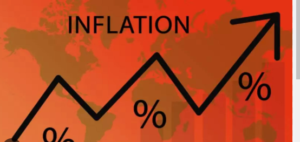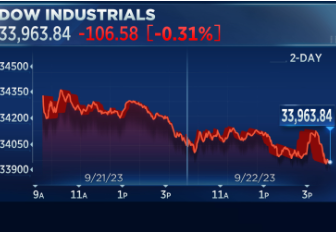New York, NY – September 12, 2024 – In a day marked by volatile trading and a surprising inflation report, major U.S. stock indices closed significantly higher, driven primarily by a robust rebound in technology stocks. Despite these gains, underlying concerns about persistent core inflation continue to cast a shadow over the economic outlook.
Inflation Data: A Mixed Bag
The Bureau of Labor Statistics reported a modest 0.2% increase in consumer prices for August, in line with expectations and bringing the annual inflation rate down to 2.5%, the lowest level since February 2021. However, the core Consumer Price Index (CPI), which excludes the often-volatile food and energy sectors, edged up by 0.3%, surpassing forecasts by 10 basis points. This unexpected uptick in core inflation suggests ongoing pressures that could influence Federal Reserve policy.
Market Performance: Technology Stocks Soar
Despite initial volatility, U.S. markets closed on a high note. The S&P 500 surged by 1.07%, the Dow Jones Industrial Average climbed 0.31%, and the Nasdaq Composite soared by 2.17%. The rebound was led by a remarkable performance in technology stocks, with Nvidia making headlines with an 8% jump, fueled by potential news of advanced chip sales to Saudi Arabia.
Across the Pacific, Asia-Pacific markets mirrored the U.S. rally. Japan’s Nikkei 225 leaped by 3.43%, while Taiwan’s Weighted Index rose by 3%. Semiconductor stocks in the region, including Tokyo Electron and TSMC, surged as they tracked the momentum of U.S. tech stocks.

UBS CEO: Navigating Inflation and Interest Rates
Sergio Ermotti, CEO of UBS Group AG, cautioned against overly optimistic expectations of aggressive rate cuts by the Federal Reserve. Despite August’s core CPI figures exceeding expectations, Ermotti remains optimistic about a “soft landing” for the economy, emphasizing that sticky inflation remains a crucial concern for investors.
U.S.-China Trade Relations: No Clear Resolution in Sight
As the 2024 presidential election looms, trade relations with China are set to remain tense regardless of the outcome. Economist Carlos Casanova from Swiss private bank UBP noted that both Kamala Harris and Donald Trump are likely to uphold or escalate existing tariffs, maintaining a challenging trade environment.
Semiconductor Stocks: Opportunities Amid Volatility
The semiconductor sector, a significant driver of market performance this year, has experienced notable volatility since July. Analysts view this as an opportunity, suggesting that undervalued chip stocks could offer compelling investment prospects amidst ongoing market fluctuations.
The Bottom Line: Market Resilience and Future Uncertainty
Wednesday’s market performance, while positive on the surface, masked underlying volatility. The S&P 500’s ability to recover from an initial 1% drop to end the day over 1% higher marked its first such rebound since October 2022. The Nasdaq’s strength, driven by technology stocks, underscores the sector’s continued significance.
However, potential risks loom on the horizon, including a possible U.S. government shutdown due to unresolved funding debates. Investors remain cautious as they navigate these uncertainties while seeking opportunities in a dynamic market environment.
1. Detailed Inflation Analysis:
- Core CPI Breakdown: Explore how the core CPI’s 0.3% increase compares to historical trends and forecasts.
- Regional and Sectoral Impacts: Investigate how different regions and sectors are affected by inflation.
2. Market Performance Insights:
- Technology Stocks: Look into the performance and news related to major technology companies like Nvidia, including earnings reports and recent developments.
- Sector Performance: Analyze how other sectors are performing relative to technology stocks.
3. Federal Reserve and Interest Rates:
- Fed Policy Impact: Examine recent statements from Federal Reserve officials regarding inflation and interest rates.
- Historical Rate Changes: Compare current inflation and core CPI figures with historical data to understand their potential impact on future rate decisions.
4. UBS CEO’s Commentary:
- Sergio Ermotti’s Insights: Research more about Ermotti’s views on economic conditions and the Federal Reserve’s policy.
- UBS Predictions: Look into UBS’s broader economic forecasts and investment strategies.
5. U.S.-China Trade Relations:
- Tariff Policies: Detailed analysis of Trump’s and Harris’s proposed tariff policies and their potential economic impact.
- Trade Relations: Explore recent developments in U.S.-China trade negotiations and their implications for global markets.
6. Semiconductor Sector:
- Stock Performance: Analyze the recent performance of key semiconductor companies and their market strategies.
- Investment Opportunities: Investigate expert opinions on why semiconductor stocks are considered good investments despite recent volatility.
7. Market Dynamics and Risks:
- Government Shutdown Risks: Explore the current status of U.S. government funding debates and their potential impact on the market.
- Volatility Trends: Look into recent trends in market volatility and factors driving these fluctuations.
Additional Sources to Explore:
- Economic Reports: Check recent economic reports from the Bureau of Labor Statistics and Federal Reserve.
- Financial News: Follow updates from major financial news outlets like CNBC, Bloomberg, and Reuters.
- Market Analysis: Review reports and analysis from financial analysts and investment firms.






